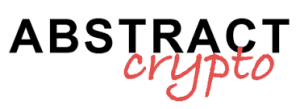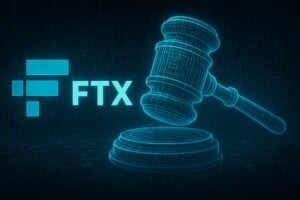The Fenwick & West case becomes even more complicated, as FTX clients strongly push for the class action. The San Francisco law firm is at the center of serious accusations, considered complicit in the alleged eight billion dollar fraud that led to the collapse of the now-bankrupt crypto exchange.
Documents and testimonies clarify an intricate picture of opaque operations, in which the close ties between the lawyers of Fenwick & West and Sam Bankman-Fried, the former CEO of FTX, emerge.
How would Fenwick & West have been involved in the FTX fraud?
From the examination of the legal documents, Fenwick & West would have had full awareness of the anomalies found, supporting, according to the accusation, Bankman-Fried’s strategies through:
- Formation of corporate Chinese boxes, like North Dimension Inc., used to hide user funds.
- Signing of backdated contracts to disguise financial transfers and circumvent regulatory checks.
- Implementation of encrypted communication policies that hindered the authorities in reconstructing the real economic flows.
The accuse contro Fenwick & West per FTX go far beyond simple formal irregularities, as they allege meccanismi di manipolazione operativa on a large scale.
The direct role of Fenwick & West lawyers in the FTX events
The lawyers of Fenwick & West are cited as key figures in the class action, serving as advisors for both Sam Bankman-Fried and entities such as Nishad Singh, Gary Wang, FTX US, North Dimension, and Alameda Research.
The main contested elements include:
- Processing of “founder loans” and policies for billionaire bonuses, suspected of being tools to shield illegal transfers of funds taken from users.
- Management of conflict of interest situations, with the firm engaged on multiple fronts that intertwined with each other.
- According to the accusation, Nishad Singh allegedly reported to the firm the improper use of user funds, but Fenwick & West allegedly continued to provide strategic support.
The main accusations involving Fenwick & West in the FTX case
Among the contested facts are:
- Facilitation in the establishment of shell companies and creation of misleading documentation, which have facilitated the covert movement of capital.
- Evasion of regulations for “money transmitter” in the United States through complex international financial channels.
Such operations, according to the class action, contributed to the disappearance of billions of dollars which were then difficult to recover for the defrauded investors.
The official investigation into the connection between Fenwick & West and FTX
The investigation, conducted by the Independent Examiner of FTX, delved into over 200,000 internal documents, revealing a close collaboration between Fenwick & West and Sam Bankman-Fried. The findings show that:
- The study would have contributed to strengthening the reputation of FTX among prominent investors, thus favoring new capital inflows.
- After the collapse of the exchange, Fenwick & West removed all mentions of FTX from their official channels, an action that the accusers interpret as an attempt to evade responsibility.
- The systematic use of disappearing chats (Signal) has made it difficult for the authorities to reconstruct some of the key communications.
Note: The complete documentation is available in the proceedings “FTX Trading Ltd., Cr. 22-CR-673” at the federal district of California. Direct sources can be consulted on the official court portals and through the SEC and NFA releases.
Fenwick & West and the corporate architecture of FTX: at the center of the dispute
From the depositions, it emerges how the corporate architecture designed by Fenwick & West was instrumental in the drainage and reuse of funds. Among the examples:
- Creation of North Dimension and other satellite companies.
- Drafting of retroactive agreements aimed at justifying irregular financial flows.
- Ongoing legal support to key figures, with suspicions of tacit complicity in ignoring warning signals (“red flag”).
Only the pressure exerted by the class action collettiva of FTX clients has made it possible to bring to light this complex network of hidden operations.
Financial and legal consequences: the impact on the crypto ecosystem
The Fenwick & West–FTX scandal has economic and judicial repercussions of international scope still to be quantified. In addition to the ongoing lawsuits in the United States, there are heated disputes concerning Chinese users, currently holding over 80% of the claims in the initiated proceedings.
Hundreds of creditors, exhausted by the wait, are already selling their credits through platforms like Backpack Exchange. Meanwhile, Sam Bankman-Fried remains detained in a prison in Brooklyn, New York, after the 25-year sentence.
Caroline Ellison and Ryan Salame, defendants in the trial, have cooperated with the prosecution and obtained sentence reductions: Ellison was sentenced to 2 years in prison and a forfeiture of 11 billion dollars, with the sentence execution scheduled for November 2024; Salame has benefited from a sentence reduction, pending further judicial evaluations.
FAQ: Fenwick & West, FTX and the wave of frauds in the crypto world
For what reason has Fenwick & West ended up in the spotlight in the FTX case?
According to the class action, Fenwick & West allegedly provided essential legal and technical support for the establishment of the network of companies and movements that enabled one of the largest financial frauds of recent years, leaving thousands of investors without protection.
Is Fenwick & West the only law firm involved?
No. Also, Sullivan & Cromwell has been repeatedly mentioned in similar proceedings, accused of having overlooked the warning signs in the maneuvers orchestrated by Bankman-Fried and his collaborators.
Conclusions: the Fenwick & West–FTX case and the possible regulatory implications
The international clamor generated by the case raises questions about the level of responsibility of law firms involved in large crypto frauds. The investigation and civil and criminal procedures are still ongoing, while attention is growing on the practices of lawyers engaged in the cryptocurrency sector.
Fenwick & West-FTX represents a symbolic case that could define new standards of transparency, control, and responsibility for legal professionals assisting digital exchange platforms. It is likely that the ongoing investigative activity in the United States will lead to a phase of significant reforms for the future of the entire crypto ecosystem globally.
Main sources used:
- Reuters
- Bloomberg Law
- CryptoNews.com
- Wikipedia – Sam Bankman-Fried
- Wikipedia – Caroline Ellison
- PYMNTS.com – Sentences Ellison and Salame
- The Wall Street Journal
According to the data collected by the Independent Examiner and reported by Reuters and Bloomberg Law, the internal documentation examined includes over 200,000 files outlining financial hedging operations orchestrated by the law firm Fenwick & West. Industry analysts note that the case could represent a turning point in the way legal due diligence is conducted in the field of cryptocurrencies, given the complexity and scale of the 8 billion dollar fraud.


